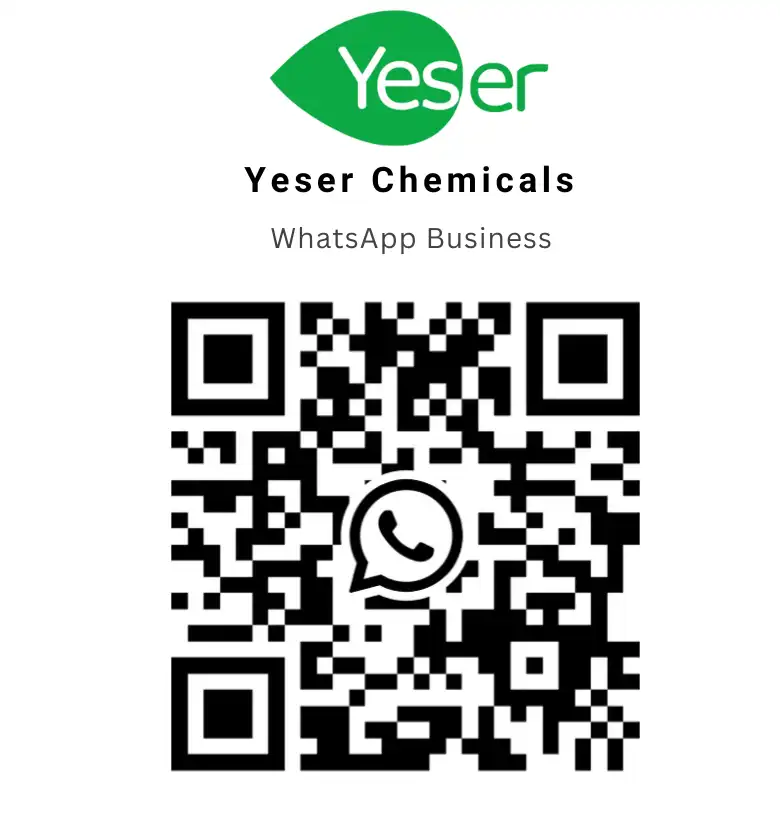Introduction
As consumers increasingly seek out natural and eco-friendly ingredients in their home and personal care products, Cocamidopropyl betaine (CAPB) has gained significant attention. This versatile coconut-derived surfactant has made its way into a variety of household detergents, personal hygiene products, and toiletries.
Coconut oil and its derivatives are known for their numerous health and beauty benefits. They are also environmentally friendly, sustainable, and biodegradable, making them a top choice for eco-conscious consumers, brands, and manufacturers.
What is Cocamidopropyl Betaine (CAPB)?
Definition and chemical structure
Cocamidopropyl betaine (CAPB), with the CAS registration number 61789-40-0, is a synthetic surfactant derived from coconut oil and dimethylaminopropylamine. Its chemical structure can be represented as:
RCONH(CH2)3N+(CH3)2CH2COO
CAPB is an amphoteric surfactant, meaning it contains both positive and negative charged groups in its molecular structure. This unique property allows it to function as both an anionic and cationic surfactant, depending on the pH of the solution it is in. This versatility makes it a popular ingredient in various personal care products, including shampoos, body washes, and facial cleansers.
It is essential to note that Cocamidopropyl betaine (CAPB) is often mistakenly referred to as Coco betaine. However, Coco betaine (CAS No. 68424-94-2) is a different chemical. It is a natural surfactant but is more irritating and less biodegradable than Cocamidopropyl betaine.
Due to its milder properties, Cocamidopropyl betaine is more suitable for personal care products, particularly those designed for sensitive skin.
How CAPB is derived from coconut oil
CAPB is synthesized from the fatty acids found in coconut oil, specifically lauric acid, by reacting it with dimethylaminopropylamine and hydrochloric acid. The result is a versatile and biodegradable coconut-derived surfactant.
Key Properties of Cocamidopropyl Betaine
Surfactant properties
As a surfactant, CAPB serves as an excellent foaming agent, emulsifying agent, and surface active agent. It helps to reduce the surface tension of water, allowing it to mix more easily with oils and dirt, making it an effective cleanser.
Foam boosting capabilities
Cocamidopropyl betaine is also known for its foam-boosting properties. It works as a foaming enhancer and foam improver in various formulations, increasing the lather and stability of products.
Mildness and biodegradability
One of the key reasons for CAPB’s popularity is its mildness. It is less likely to cause skin irritation and allergic reactions compared to other surfactants. Additionally, it is biodegradable and less harmful to the environment.
Thickening properties
CAPB can act as a thickening agent in personal care product formulations. It demonstrates a synergistic effect when combined with other surfactants or ingredients, enhancing the viscosity of the final product. This provides a desirable texture and consistency for various personal care products.
Anti-static properties
Cocamidopropyl betaine possesses anti-static properties due to its ability to function as a cationic surfactant at certain pH levels. By reducing static electricity in hair, it helps to minimize frizz and flyaways, resulting in smoother, more manageable hair. This property makes it a valuable addition to hair care products.
CAPB in Home & Personal Care Products
Shampoos and conditioners
Cocamidopropyl betaine is a common ingredient in shampoos and conditioners, where it acts as a gentle cleanser and foam booster. It helps to remove dirt, oils, and residues from hair while maintaining the hair’s natural moisture balance.

Body washes and soaps
CAPB is frequently used in body washes and soaps due to its mildness and compatibility with various skin types. It effectively cleanses the skin without causing dryness or irritation, making it suitable for daily use.

Facial cleansers and makeup removers
Cocamidopropyl betaine is a popular choice for facial cleansers and makeup removers, as it can remove oil-based makeup and impurities without stripping the skin of its natural oils or causing irritation.

Toothpaste and mouthwash
CAPB’s mild cleansing action and foam boosting properties make it a suitable ingredient for toothpaste and mouthwash formulations, where it helps to clean teeth and gums effectively without causing irritation.

Laundry detergents
In the home care sector, CAPB is used in laundry detergents for its ability to enhance cleaning performance, boost foam, and reduce static in fabrics. Its mildness makes it an ideal choice for sensitive skin and baby laundry detergents, as it minimizes the risk of skin irritation.

Dishwashing liquids
CAPB is also a popular ingredient in dishwashing liquids due to its effectiveness in removing grease and food residues. Its compatibility with other surfactants and mildness allows for efficient cleaning without causing excessive skin dryness or irritation for those using the products.

Benefits of Using Cocamidopropyl Betaine in Home & Personal Care Products
Enhancing foam and viscosity
Cocamidopropyl betaine’s foam boosting properties improve the lather and overall performance of personal care products. It also acts as a thickening agent, increasing the viscosity of formulations and providing a luxurious texture.
Reducing skin irritation and allergic reactions
CAPB is milder than many other surfactants, making it less likely to cause skin irritation or allergic contact dermatitis. This makes it a preferred choice for products designed for sensitive skin or daily use.
Environmentally friendly choice
Cocamidopropyl betaine is biodegradable and derived from a renewable source, coconut oil. This makes it an environmentally friendly alternative to synthetic detergents and artificial surfactants that can be harmful to aquatic life and ecosystems.
Compatibility with other ingredients
CAPB is compatible with a wide range of other ingredients, including anionic, cationic, and nonionic surfactants. This versatility allows formulators to create innovative and effective personal care products that cater to diverse consumer needs.
Cocamidopropyl Betaine (CAPB) Safety Profile
Cocamidopropyl betaine is considered a mild and well-tolerated ingredient for the skin when it is produced with high-quality raw materials and follows regulated processes that meet cosmetic-grade standards. This makes CAPB a safe choice for many personal care products, detergents, and cosmetics.
The Cosmetic Ingredient Review (CIR) has published two safety assessments on CAPB, both of which conclude that it is safe for use in personal care and cosmetic products. The initial assessment was published in 1991, but the panel later reopened the report in 2007 based on newly available data.
The updated and comprehensive final report on the safety assessment of Cocamidopropyl Betaine examines a wealth of data and cases, ultimately concluding that CAPB is safe for use in cosmetics, provided that the formulations are nonsensitizing. This ensures that consumers can enjoy the benefits of CAPB in various products without concerns about safety or irritation.

Potential Side Effects and Safety Concerns
Irritation and allergic contact dermatitis
Although CAPB is considered a mild surfactant, some individuals may still experience skin irritation or allergy. It is essential to perform a patch test before using any new product containing Cocamidopropyl betaine to determine individual sensitivity.
Sensitivity in some individuals
Those with a history of contact dermatitis or sensitive skin should exercise caution when using products containing CAPB. It is essential to consult with a dermatologist or healthcare professional if adverse reactions occur.
Regulatory and safety guidelines
Cocamidopropyl betaine is considered safe for use in personal care products when formulated according to regulatory guidelines. Manufacturers must adhere to guidelines set by organizations such as the FDA, EU, and other regulatory bodies to ensure consumer safety.
How to Choose the Right CAPB for Your Formulation
Factors to consider
When selecting Cocamidopropyl betaine for your formulation, consider factors such as product type, desired foam and viscosity levels, and compatibility with other ingredients in your formulation.
Trusted suppliers and certifications
Source CAPB from reputable suppliers that provide certifications and evidence of product quality, origin, and sustainability. This ensures that you are using high-quality Cocamidopropyl betaine in your home & personal care products.
Yeser Chemicals is a leading producer of skin-friendly and eco-friendly CAPB 35% & CAPB 45% since 2013. We utilize cutting-edge techniques and follow ISO standards to produce high-purity CAPB. Send us an inquiry. Get Competitive Offer & Free Sample.
Get a QuoteThe Future of Cocamidopropyl Betaine in Home & Personal Care Products
Market trends and growth
The demand for natural, eco-friendly, and mild ingredients in home & personal care products is expected to continue growing. This trend bodes well for the future of Cocamidopropyl betaine and its application in various product formulations.
Innovations in formulation and application
As the market for CAPB expands, so too will the innovations in its formulation and application. Researchers and product developers will continue to explore new ways to harness the power of this versatile coconut-derived surfactant to create innovative and effective personal care products.
Conclusion
Cocamidopropyl betaine offers numerous benefits as a coconut-derived surfactant in personal care products. Its mildness, versatility, and environmentally friendly profile make it an attractive ingredient for manufacturers and consumers alike. With the growing demand for natural and eco-friendly personal care products, CAPB is poised to maintain its position as a popular choice for a wide range of applications, from shampoos and body washes to facial cleansers and toothpaste.
Frequently Asked Questions (FAQs)
What are the advantages of using CAPB over other surfactants?
Cocamidopropyl betaine is milder, more versatile, and environmentally friendly than many other surfactants. It is derived from a renewable source and offers excellent foam boosting and thickening properties while being less likely to cause skin irritation or allergic reactions.
Can CAPB be used in baby and sensitive skin products?
Yes, CAPB is often used in products formulated for babies and individuals with sensitive skin due to its mildness and low risk of causing irritation or allergic reactions. However, it is always recommended to perform a patch test and consult with a healthcare professional if any concerns arise.
Is Cocamidopropyl betaine safe for the environment?
Cocamidopropyl betaine is considered biodegradable and derived from a renewable source, making it a more environmentally friendly choice compared to synthetic detergents and artificial surfactants.
How can I verify the quality and origin of the CAPB in my products?
To ensure the quality and origin of the Cocamidopropyl betaine in your products, source it from reputable suppliers that provide certifications and evidence of product quality, sustainability, and traceability. This will help you confirm that you are using high-quality and responsibly sourced CAPB in your personal care formulations.
Is Cocamidopropyl Betaine a natural ingredient?
Cocamidopropyl Betaine (CAPB) is a ‘semi-natural’ ingredient. It is derived from coconut oil, which is a natural source, but it undergoes a synthetic process to create the final compound. The process involves reacting coconut oil with dimethylaminopropylamine and then adding monochloroacetic acid. As a result, although CAPB originates from a natural source, it is considered a synthesized or semi-natural ingredient.






